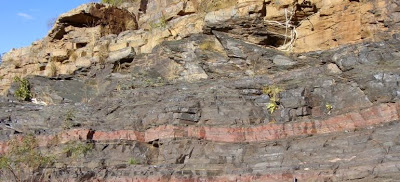
Oxygen appeared in the atmosphere up to 700 million years earlier than we previously thought, according to research published today in the journal Nature, raising new questions about the evolution of early life.
Researchers from the University of Copenhagen and University of British Columbia examined the chemical composition of three-billion-year-old soils from South Africa — the oldest soils on Earth — and found evidence for low concentrations of atmospheric oxygen. Previous research indicated that oxygen began accumulating in the atmosphere only about 2.3 billion years ago during a dynamic period in Earth’s history referred to as the Great Oxygenation Event.
“We’ve always known that oxygen production by photosynthesis led to the eventual oxygenation of the atmosphere and the evolution of aerobic life,” says Sean Crowe, co-lead author of the study and an assistant professor in the Departments of Microbiology and Immunology, and Earth, Ocean and Atmospheric Sciences at UBC.
“This study now suggests that the process began very early in Earth’s history, supporting a much greater antiquity for oxygen producing photosynthesis and aerobic life,” says Crowe, who conducted the research while a post-doctoral fellow at Nordic Center for Earth Evolution at the University of Southern Denmark in partnership with the centre’s director Donald Canfield.
There was no oxygen in the atmosphere for at least hundreds of millions of years after Earth formed. Today, Earth’s atmosphere is 20 per cent oxygen thanks to photosynthetic bacteria that, like trees and other plants, consume carbon dioxide and release oxygen. The bacteria laid the foundation for oxygen breathing organisms to evolve and inhabit the planet.
“These findings imply that it took a very long time for geological and biological processes to conspire and produce the oxygen rich atmosphere we now enjoy,” says Lasse Døssing, the other lead scientist on the study, from the University of Copenhagen.
Note : The above story is based on materials provided by University of British Columbia.










